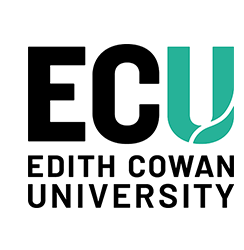Author Identifier
Tanya Jenke: http://orcid.org/0000-0003-4973-6767
Date of Award
2025
Document Type
Thesis
Publisher
Edith Cowan University
Degree Name
Doctor of Philosophy (Integrated)
School
School of Medical and Health Sciences
First Supervisor
Marcus Cattani
Second Supervisor
Roberta Selleck
Third Supervisor
Jacques Oosthuizen
Abstract
In recent decades, workplace injuries have plateaued, and the rates of workplace fatalities have not shown significant decline. To investigate this behaviour, an analysis of the impacts of external factors was undertaken to understand the uncertainty around the lack of improvement in safety performance. Previous research focuses on internal factors, and any research on external factors is not within the West Australian context. As a result, this research examined the impact of external factors such as economic cycles, the COVID-19 pandemic, and government legislation on safety performance in Western Australia.
A mixed-methods approach was strategically implemented in this study. Qualitative analysis was conducted on survey data from 2,492 participants over five years, assessing their perceptions of their organisations' effectiveness in preventing fatalities. The survey was based on the “Ten Pathways” described in Michael Quinlan's 2014 book, "Ten Pathways to Death and Disaster", effectively capturing external and internal factors influencing safety. Quantitative analysis was conducted through secondary analysis of existing databases. This encompassed Western Australian occupational injury data (n = 627,953) spanning 18 years, the governmental mining fatalities register detailing 71 fatalities over 20 years, publicly available economic data from the Australian Bureau of Statistics, and COVID-19 data sourced from Johns Hopkins University in the United States. Multiple linear regression and ANOVA analyses were utilised to assess the impact of external factors on safety performance during the study period.
Survey data demonstrated that there has been no significant improvement in employees' perceptions of their employers' effectiveness in preventing fatalities over the past five years, with an average perception score of M = 6.63 out of 10. The analysis of the data, segmented by geographical location and organisational roles, revealed that those in leadership positions view their organisations as more effective in preventing fatalities than those in employee roles. Analysis of the impact of economic cycles on safety performance indicates that external factors influence safety performance through the acute removal of funds and resources. In Western Australia, occupational injuries increase during economic growth and decrease during economic recessions. Industries such as manufacturing are more susceptible to economic changes, while sectors like mining and construction show increased resilience. Notably, during the COVID-19 pandemic, the occupational injury rate rose 8%—the first increase in 18 years. Despite this increase in injury rates, employees perceived their workplaces as safer, indicating a significant discrepancy between perception and the actual safety conditions. Workers employed by the government regulator reported the lowest perceived effectiveness in fatality prevention. This likely reflects the challenges mining organisations face in adhering to the new Work Health and Safety legislation introduced in Western Australia in 2022.
This research demonstrates that various external factors influence occupational injuries. To date, no other study has explored such a wide range of external factors affecting safety performance in Western Australia or Australia. Understanding how these external factors shape safety performance can aid stakeholders, governments, and organisations develop effective interventions and resilient safety management systems, ultimately enhancing workplace safety.
Access Note
Access to this thesis is embargoed until 1st July 2026
DOI
10.25958/f0gm-tx79
Recommended Citation
Jenke, T. (2025). Risky business: Investigating the impact of external factors on safety performance. Edith Cowan University. https://doi.org/10.25958/f0gm-tx79

